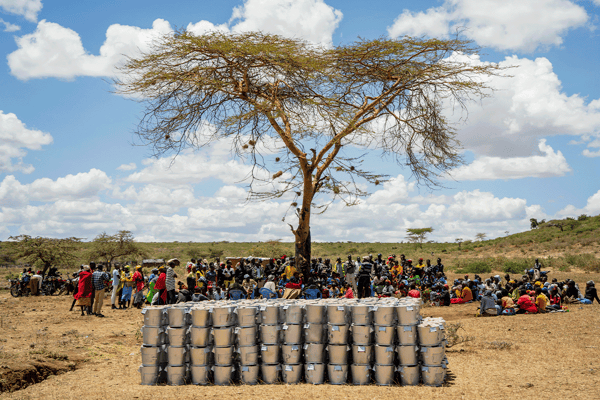In a remarkable show of support, the Guteka Neza project in Rwanda has raised €1.3 million ($1.4...
Rwanda's $39 Million Green Finance Initiative for Ecosystem Restoration
In a world where climate change poses an existential threat, the push towards sustainability has never been more urgent. Recently, Rwanda made headlines by securing $39 million in funding aimed at restoring the fragile ecosystems straddling the Congo-Nile divide. This ambitious initiative not only underscores the commitment to combating biodiversity loss but also stands as a beacon of hope for similar endeavors globally. As the complexities of carbon markets and biodiversity intersect, understanding the implications of such investments is crucial for stakeholders across the board.
The Significance of the Congo-Nile Divide
The Congo-Nile divide is a critical region that encompasses diverse ecosystems vital for both local livelihoods and global biodiversity. This area suffers from significant environmental stress due to rampant charcoal production and unsustainable timber harvesting. According to the allAfrica, this funding aims to mitigate these adverse effects while enhancing ecological resilience. By channeling resources into restoration, Rwanda is not only addressing environmental degradation but also showcasing how green finance can operate effectively in practice.
Biodiversity Loss and Its Repercussions
Biodiversity loss is one of the most pressing challenges of our time. As ecosystems collapse, the consequences can ripple through the food chain, affecting everything from local wildlife to global markets. The World Wildlife Fund reports that approximately 1 million species face extinction due to human activities. Investing in regions like the Congo-Nile divide can play a crucial role in halting this decline by restoring habitats and increasing biodiversity. With the right financing mechanisms, such as carbon credits, we can create an economic incentive for conservation rather than destruction.
Carbon Credits: A Pathway to Sustainability
Carbon credits are an essential tool in the fight against climate change and biodiversity loss. By creating a market for carbon emissions, businesses and governments can offset their environmental impact by investing in projects that restore and conserve nature. Rwanda’s new funding will likely involve a variety of financial instruments, including carbon credits, which could generate additional revenue streams while restoring important ecosystems. This harmonization of economic growth and environmental sustainability is critical as we move toward a greener future.
How Investments in Restoration Benefit Stakeholders
Investing in ecological restoration like Rwanda’s Congo-Nile project creates substantial ripple effects. For investors, it opens up new avenues for sustainable finance, leveraging their capital for both profit and planet. According to the United Nations Environment Programme, the restoration of ecosystems can lead to a rise in property values, improved resilience to climate impacts, and significant increases in carbon sequestration. For policymakers, such investments underscore the critical nature of integrating biodiversity into economic planning and decision-making.
Environmentalists: A Vanguard for Change
For environmentalists, projects such as Rwanda's restoration initiative provide a valuable model for grassroots movements advocating for change. By demonstrating the financial viability of restoration, activists can drive awareness and support for local initiatives across the globe. As biodiversity and climate change intersect, the role of environmental stewardship becomes even more vital. Citizens and advocacy groups can mobilize around the tangible benefits of these projects, helping to build a robust movement for sustainable practices.
Future Prospects in Carbon and Biodiversity Markets
Looking ahead, the potential for synergy between carbon credits and biodiversity conservation is immense. With increasing pressure from both public and private sectors to act on climate change, markets for biodiversity are expected to grow significantly. Initiatives like the one in Rwanda are likely to attract further investments, showcasing the viability of integrating environmental goals into financial frameworks. The greater emphasis on sustainable development paves the way for innovative solutions and partnerships that can restore ecosystems while generating profits.
In conclusion, Rwanda’s $39 million commitment to restoring the Congo-Nile divide serves as a pivotal example of how green finance and ecological conservation can work hand in hand. As we navigate the intricacies of carbon markets and biodiversity, it is essential for stakeholders—from investors to policymakers—to engage with and support such initiatives. The future of our planet may very well depend on our ability to harmonize economic growth with environmental stewardship, making projects like this one not just significant but vital. As interest in sustainability grows, keeping an eye on real-world examples will be essential for driving further progress in the fight against climate change and biodiversity loss.





.webp?width=600&name=120525_Singapore%20signs%20sixth%20bilateral%20carbon%20agreement%20with%20Rwanda_featured%20image%20(1).webp)
